Here’s The Flight
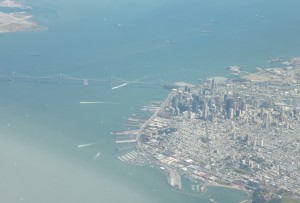
Goodbye San Francisco. From here we go up over Canada, pass over Greenland and Iceland. The pilot says no worries about the ash. The volcano has calmed down and we are too high for it anyway. He said it with an air of surety. So here we go....
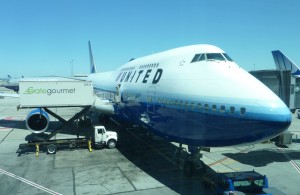
Two Story Airplanes are usually reserved for "over the ocean" type of flights. We sat and watched this United B 757 for too long before checking in at Lufthansa only to find that they had given our First Class Seats away!. We like to fly First Class when going overseas. It gets you there more rested and you dont waste a day recovering. Paying bills with Credit Cards and accumulating Flyer miles has been a blessing for many years. The Lufthansa staff jumped thru hoops and got our seats back ... moved us upstairs ... the first time we've been upstairs on a 757.
Considering our recent luck with delayed flights, grounded planes and lost luggage, this flight rates a 10. Non of that … everything went well. So here we are in Prague. We just went out to eat dinner and found the famous square and had a nice dinner. It’s fun figuring out the value of the local currency.
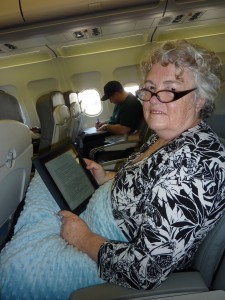
Luelle with her iPad and favorite travel pillow. These things are more important on the longer trips. This will be her first time without bringing a lot of paperbacks to read. We'll let you know how the ipad does.
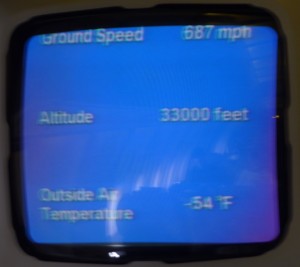
We're going REALLY fast!. The clouds are going by faster than usual. The ground speed indicator shows we are going almost 700 miles per hour. Without a tailwind, this aircraft goes only a little over 500. Yahoo for tailwinds, we'll get there a little sooner.
Tomorrow TravelBabe will go and get all of those details for you. I’m finishing up my Tuesday Webinar and we’ll see how well it will work broadcasting from the Czech Republic.
Here’s The Map

As you can see, the portion of the Danube that we'll see on this cruise is less than half of its navigabble length. We'll catch other parts of it on future trips.
Here’s the map showing the parts of Europe that we’ll be visiting on this trip. We’ll start in Prague (Praha on the map). Then we’ll go to Dresden where I (Dave) will attend the International PassivHaus conference. What in the world will Luelle do by herself?? Stay tuned, I dont think she’ll have any problems. She was talking about taking the train to Berlin… After the conference, we go to Passau and board the River Beatrice. It’s the newest and best ship in the Uniworld fleet. We journey a fair distance each day till we get to Budapest, the end of our river cruise. We’ll wrap up with a week in Switzerland.
BTW the best downloadable map I’ve found is this one from Eurail. It’s about 3MB but that means you can zoom in a long ways and not lose quality. Download it HERE
Getting Ready To Leave: What Are We Forgetting? & Travel Tip #1
Have you ever left on a trip and never forgotten anything? We haven’t. At least some little something that, “We’ll bring next time” … Actually the bigger question is, “Have you ever packed too much and arrived back home having never used some things?” … But that’s a topic for another post.
Travel Tip #1 (Learned in the School of Hard Knocks when Luelle’s passport and all our money were stolen by a pickpocket in Barcelona). That time Heather had to scramble and fax copies to Spain.
Now what we do is have scanned copies of our passports sent to ourselves by email. These could be in passworded documents if you are worried about security of your email. Then if we needed them, we could log on from any computer in the world and download a copy. The same thing could be done with Drivers Licenses and Credit Cards. Those should be passworded for sure. We also keep several paper copies in different parts of our luggage for additional redundancy
It always seems to happen as we get ready to get out of town. The Mad Scramble. We haven’t sold any property for months. Now we are selling 2 and leasing one in California and buying one in Virginia, all going on while we’re in Europe … Ugh! But it’s a blessing to have a great team to work with and a blessing to be living in this digital age. We expect that all will go smoothly enough. I’ll continue to do my webinars and even though I’m encouraging Luelle to take a break, I’m sure she’ll sell some River Cruises from her River Cruise! What a country! I guess it’s not work if you love it!
So we need your help! What are your favorite things to not forget? Maybe your favorite travel tip? Add it in the comments and We’ll publish a complete list later. We’ve already got Heather to take in the mail and feed Tsunami. Thanks kiddo…
Next Post, I’ll share our itinerary and a map. Our goal in writing this blog is to bring as much value as we can to our friends and those considering a River Cruise. We’re committing to writing every day and including photos and video. You’ve seen Rick Steves and Samantha Brown, the professionals. This blog will be more the unofficial version. We’ll be your “embedded reporters” boots on the ground, up close and personal, and do our best to tell it how it really is…
Thanks for reading,
Luelle & Dave Robinson aka Travel-Babe & her Protector from Pirates.
(I may get in trouble for calling her that but I think it has a certain ring to it. What do you think?)
On Past Portland, To Astoria At The Ocean
On the last day of our cruise on the Columbia River, we went on past the confluence of the Willamette and the Columbia, the rest of the way to the Pacific Ocean and the port of Astoria. Here are some pictures.

Lewis and Clark wintered here in 1805-1806. After surveying the options, they chose this location to build Fort Clatsop. They didn't ask the Indians for the land or the trees, but after staying here for 3 1/2 months, they did give the fort to the Indians. This photo depicts the trading that went on between them. Trading with Europeans was nothing new to these Indians. One chief met them wearing a complete British Army Officers Uniform that he had traded for.

Sacajawea was the young Indian bride of the French Canadian, Toussaint Charbonneau, Charbonneau was a good guide but the pair was chosen because of Sacajawea's ability to speak the Shoshone Indian Language. (she had been kidnapped from them as a child) Her son Jean Baptiste was born on the trail and celebrated his first birthday at Fort Clatsop.

Miltary Flag Raising at Fort Clatsop. The flag had 15 stars in 1805. (the two past 13 were Vermont and Kentucky) It stayed at 15 stars until 1818 and thereafter on each July 4th a new flag was issued if a new state had joined the Union in the previous year. ... The things you learn on trips like this ... this will stand us in good stead in a trivia game in our future! The soldier is wearing real deer skin pants and shirt. He mentioned that they hadn't been washed in 4 years!
Sailing Back Down The Columbia Gorge
Thursday was a lazy day, sailing all the way back down the Columbia River… There were galley tours, bridge tours, and proceeding thru the locks. The weather was about as perfect as it gets. Here are some pictures.

Our Captain telling about the challenges of Navigation on the River, both before and after its taming by the dams and locks. He told us that our ship takes about 10 feet of water and needs about 10 more feet before he starts to get comfortable. He isn't seen around much during the day as he is up most nights. The boat always moves at night and he wants to be on duty for the tricky parts, especially all the locks.

Sharing a lock with a barge load of logs. Transport on the river is vastly cheaper than rail or truck. The only problem is that the rivers only go to certain locations.....

Nice View of Mt Hood, as we head down river. For the record, this was taken on July 8th 2010, Almost totally snow covered above the tree line. The locals said that this was an exceptionally wet winter and that the sunshine that we brought was the first they had had.

Here's the first mate in the wheelhouse. They prefer the large wooden wheel to the smaller joy stick controls that are located there and on the wings of the bridge on each side. They say they have better control with the original steering system. This boat was commissioned in 1983 and has two 1100 horsepower diesel engines. It goes about 16 mph most of the time. It will go a little faster than this "hull speed" but doing so creates a huge destructive wake and cuts fuel efficiency in half.

The Radar, GPS, & depth gage (39.7 feet under our hull to the bottom) . These are a few of the high tech helps that the Captain has available to guide us safely up and down river. Even with all of this, we did find some very "high viscosity water" That is, we were stirring up sand and taking the tops off of some submerged sandbars!

The Galley was pretty small, as would be expected for a ship of this size where space is at a premium. Notwithstanding the size, the Cruise West Staff put out some of the best cuisine we've ever had aboard ship or anywhere. They are truly to be commended.

One great thing about this ship is the great views from the dining room. All the seats are good seats. Although this ship is 27 years old, you can see that it has been well maintained and provides a comfortable atmosphere. By the end of the week we have shared a table with most everyone and have met some truly delightful people.

Strangely enough, we shared a lock with Captain Bob and his tug both on the way up and on the way back. This time he was pushing a load of wood chips headed for a pulp mill. Sitting in a lock for 15 minutes to an hour, waiting for the water to equalize is boring to some who traverse this river. Not Bob. Here he is serenading the rest of the lock riders with Spoons. Go Bob! We like people who refuse to get bored! That's part of what we like about traveling ... meeting people like Bob.

A Pelican Landing. We learned that they can hold 10 gallons of water in their throat! This is one of the things that Lewis and Clark put in their journals. They had been charged with documenting new species and acquainting the Easterners with the flora, fauna, & landscape of the West. Two live animals that were taken to Washington DC in response to their mandate from President Thomas Jefferson, were the Prarie Dog which Lewis called a "barking squirrel" and the Pronghorn Antelope.
Day 4 Walla Walla
A whole room of Uniforms and Women’s dresses and hats. The ladies must have had 20 inch waists to fit into their clothes.
And each morning they all had to be hitched up, then unhitched and feed at noon, re-hitched up to finish the day. Everyone was commenting on how hard the work was then, and how we are glad it wasn’t us.

Count The Stars. This was when Fort Walla Walla was a frontier outpost and Oregon was just becoming a State.

This is a Georgia Pacific pulp processing plant. It processes a special kind of pulp to make paper. It is from the Poplar-Cottonwood Hybrid trees that have been developed. They grow fast and can be used for lumber for furniture in 10 years. The great thing about these trees is the very light colored wood which requires less chemical processing to get it white for use as paper. This is easier on the environment ... less pollution dumped in the rivers etc.
Hell’s Canyon Jet Boat Excursion
Hell’s Canyon of the Snake River
Day 3 of our trip on the Spirit of 98 included a trip up the Snake River via Jet Boat. The boat had 2 Cummins Diesel engines, each one the next size larger than the ones in Dodge Ram pickups. They had plenty of power and together got one mile per gallon. The boat held up to 55 people and only needed 1 foot of water.
The Spirit of 98 is an older but sturdy ship. It is custom designed for this type of cruising on this type of river. I really appreciate it’s design and functionality and other than a few energy items, I wouldn’t really want to change it to make it look more modern. (Luelle may have additional opinions)
The boat was great but the terrain and the wildlife were what we went for and we were not disappointed. There were roads on one side of the river for the first 20 miles, then the roads stopped and the wildlife started. The first big animals we saw were a Mule Deer Doe and her spotted fawn.
Then we saw several groups of Bighorn Sheep. This time of year they are segregated. We saw both the “Men’s Group” and the Women and Children.  Then we saw Great Blue Herons and Ospreys. The Basalt structures of the walls of the canyon were similar to Devil’s Postpile near Yosemite … only more twisted.
Then we saw Great Blue Herons and Ospreys. The Basalt structures of the walls of the canyon were similar to Devil’s Postpile near Yosemite … only more twisted.
Luelle writes:
Today we followed the Snake River as it flowed through the deepest gorge in North America. We had the Blue Mountains (Oregon) on one side and the Seven Devils Range (Idaho) on the other side.
This was the area where the Lewis and Clark party camped during the Fall of 1805. The same area that Chief Joseph led his band of 250 warriors and 500 women across the river towards the Lapwai Reservation in 1877.
The Jet Boat stopped every so often for us to check out the wild life – deer and long horn sheep were abundant. We also were able to see ancient rock petroglyphs carved into the rocks.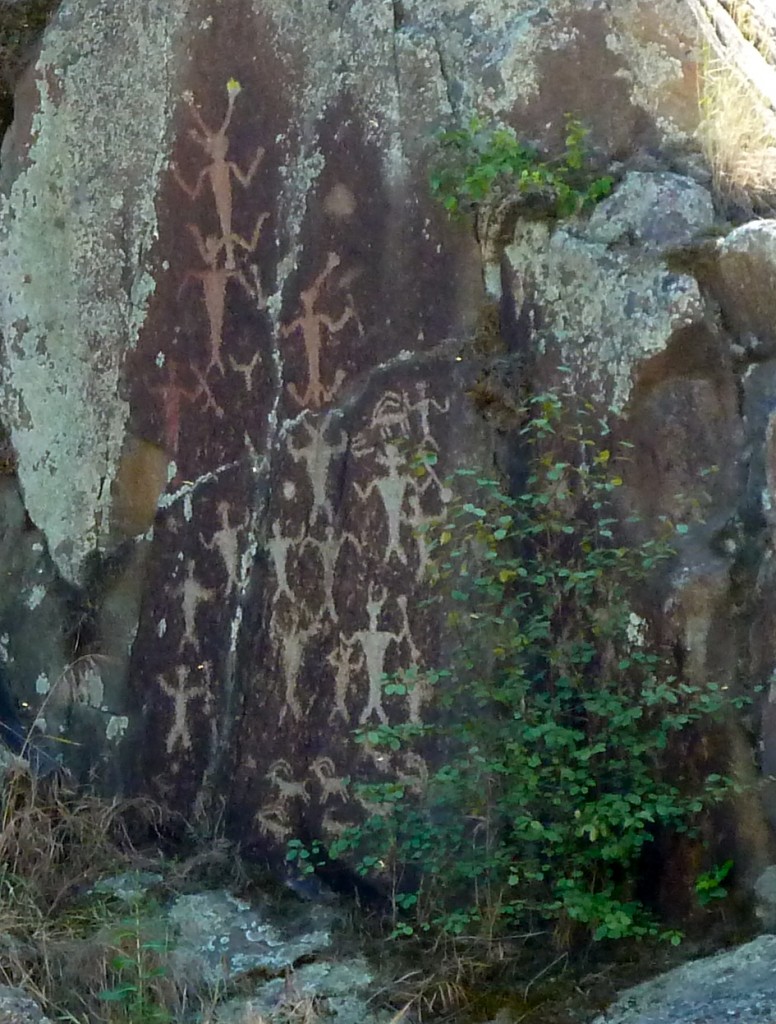
There were very few people around – just miles and miles of rock formation and hills. It was possible to envision the Native Americans going about their lives here. But now it is deserted.
Although there is not the abundance of food non-stop that you find on the big ocean liners, we are being fed very well. Every morning we get a wake up call over the loud speakers in our room – and it is always a lot earlier than I would like to be getting up. Breakfast is served – always a special omelets and stuffed French toast to choose from.
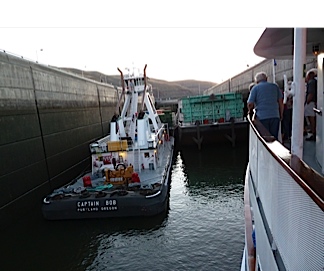
This is the 7th Lock we've been thru and the first time we've shared the ride. This time it was with Captain Bob's Tug and his two barges. It was interesting enough to see how Bob and his two barges just barely fit, but then Bob got out his violin and started serenading his audience on our ship. The accoustics inside an almost empty lock with water for a floor, concrete walls and open sky are really not too bad.

This is the 7th Lock we've been thru and the first time we've shared the ride. This time it was with Captain Bob's Tug and his two barges. It was interesting enough to see how Bob and his two barges just barely fit, but then Bob got out his violin and started serenading his audience on our ship. The accoustics inside an almost empty lock with water for a floor, concrete walls and open sky are really not too bad.
We have actually eaten in restaurants our last two days, as we were gone from the ship the entire day. There is a social hour in the lounge for one hour before dinner. Then you are called to dinner with the reading of the menu for dinner. Great soup creations, a choice of a green salad, or the special salad (tonight it was beets & potatoes – no thanks)
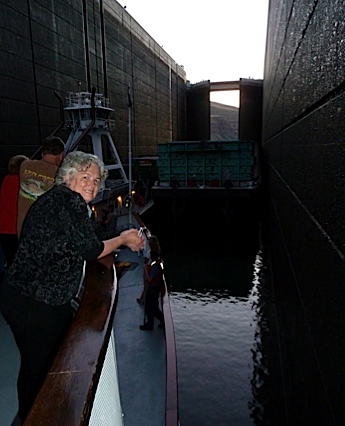
Here's that Lock as they are opening its gates and we are ready to sail on thru ... now about 45 feet lower in elevation.
There are always several choices of entrée’s – a fish, a beef, and a vegetarian. Very gourmet, arranged very nicely on the plate. There is only one dinner seating, it is all open seating, and we all seem to be playing the game of sitting with a new couple or group each meal. There is a group of 14 people from Texas that came together, but everyone else is from all over.
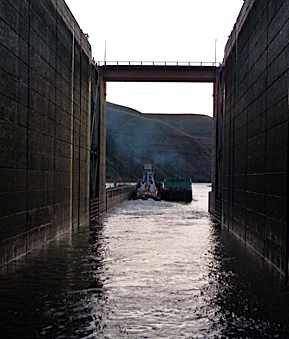
There's Captain Bob and his two barges. Our captain is courteous and let's Bob get situated before he hits the throttle.
The desserts have been fabulous. The first night it was a chocolate mousse in a spun cookie shell. The following night it was an apple baked in philo dough (yum). Last night it was Chocolate Lava Cake, and tonight Crème Brulee. Then there is always a cheese and fruit plate, and ice cream selections for those who can resist the above mentioned desserts.
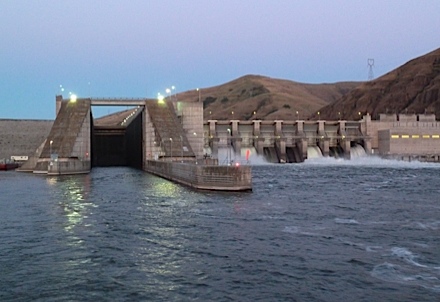
This photo is typical of most of the dams on the Columbia, showing the lock and the rest of the spillways. The generator house is shown at the right and off the edge of the photo is the fish ladder for the fish to get around these dams on their way to the sea and back to spawn.
We have two young ladies that are the Expedition leaders – they have traveled all over the world. They are with us on all of our excursions, and lead the fun in the evening – they are playing Trivia tonight, which we can listen to in our room. There is also an expert on Lewis and Clark with us, and he gives short lectures each night, along with joining us on the daily excursions to let us learn more of the Pacific Northwest.
The rooms – when we were first shown to our room, it looked VERY small, which it is, but we have found it to be very adequate. There are twin beds against each wall, and a wardrobe at the end of one bed and a desk at the end of the other. At the head of the beds is the bathroom – you literally have to step outside to turn around. But it is working – there is a shower, toilet, and sink.
At the safety meeting we had upon arrival – they told us about the room keys – there aren’t any!! We couldn’t believe it. They said we could get a key for our wardrobe if we wanted one. Now after a couple of days, everyone seems used to it. It is kind of nice to not have to fumble with your key each time you go in or out – you just shut the door behind you. You can lock it from the inside when you are in there. We don’t have anything valuable except our computers, and we just leave them out. It must work, or I am sure they would have changed it by now.
More on the Jet Boat and our Captain and some thoughts on Fish and Rivers and Dams, etc.
The Hell’s Canyon Rose was our jet boat. We learned that welded aluminum is the construction method of choice for this type of boating. The captain said it’s impossible not to hit rocks and fiberglass just doesn’t hold up. He is a fishing guide for most of the year and a jet boat driver the rest of the time. He actually lives in a cabin that we passed. It is past the end of the road and has no electricity or running water. He doesn’t think solar has all the kinks worked out so he has a Honda 2000 watt generator and a 5 gallon bucket and a coleman lantern….
He said the salmon run this last year was the best in 40 years. He attributes it to all the fine tuning that is being done to help the salmon in their migration and reproduction and defense against predators etc. The combination of many things is increasing the salmon production each year. We’ll see if they can keep it up. It has been interesting reading the local papers and talking to the locals about fish and dams. Some think the dams are horrible and should be taken out. Some think we should put in some more. Probably the reality is that no more will be built and the best thing to do is figure how to best manage the ones already in place for the benefit of the all parties, agriculture, hydroelectric, Native Americans, Sport fishermen etc and not waste too much time pointing fingers and name calling. This will eventually include taking them out as they dont last forever and need to come out before they break from old age. Some of the oldest dams have already been removed. The question will be whether they will be replaced when they get old, or the rivers will be wild again. Interesting discussion, but to even consider that as an option, we need more conservation and new renewable, non polluting sources of energy. What a great idea! Oh, yeah, that’s my day job! But this side job of protecting Luelle from pirates on the high seas, is not too bad a duty.
Columbia River #2
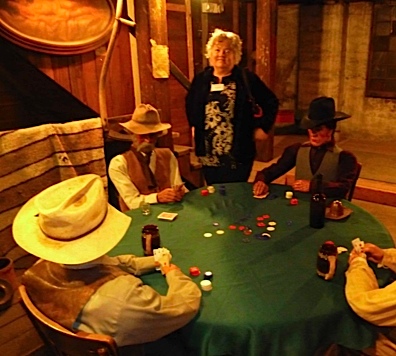
Luelle with the Gamblers in the Pendleton Underground. There are about 10 square blocks of downtown Pendleton which are connected by tunnels and passageways. T
The second day we went to Pendleton Oregon and an Umatilla Indian Reservation. Here are some photos of day #2
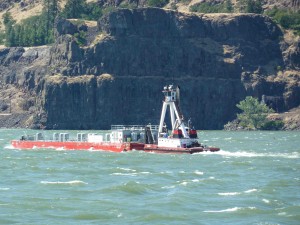
This is a special barge to transport baby salmon downriver. It has been found that the trip to the sea is very dangerous for them with the slower water and the possibility of getting ground up in generator turbines.
-
This is a special barge to transport baby salmon downriver. It has been found that the trip to the sea is very dangerous for them with the slower water and the possibility of getting ground up in generator turbines.
Columbia River Gorge To Hells Canyon #1
Luelle and I flew from Fresno to Portland on Alaska Airlines yesterday. After a few hours checking out Downtown Portland, which was getting ready for a Jazz Festival, we boarded the ship (boat?) which will be our home for the next 7 days.

Maybe the biggest collection of saddles and tack that I've ever seen at the Portland Outdoor Store. They cater to Rhinestone Cowboys, Real Cowboys, European equestrians and even Polo players.
The “Spirit of 98” is a Cruise West vessel that goes from Portland to Lewiston Idaho on the Columbia and Snake Rivers.
…
This is our first trip with Cruise West and so far we really like it. Since the ship has only 55 cabins, and always open seating and informal dining, you get to know your fellow passengers by the end of the week.

Luelle settling in to her new quarters as we leave Portland on the Willamette River to join the mighty Columbia.
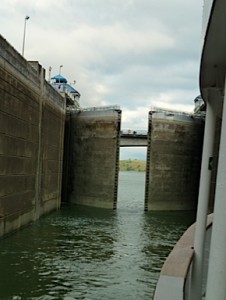
"Locking" This is the first lock on the Columbia at Bonneville Dam. We learned that all sizes of boats are allowed to go thru ... from large tripple stacked barges down to jet skis. If you dont have a radio on your jet ski, they have system of pulling cords and red lights and green lights to help you proceed thru the locks.


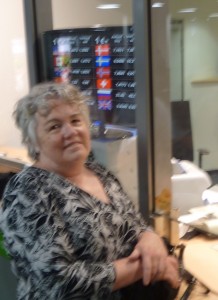

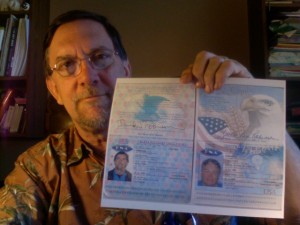













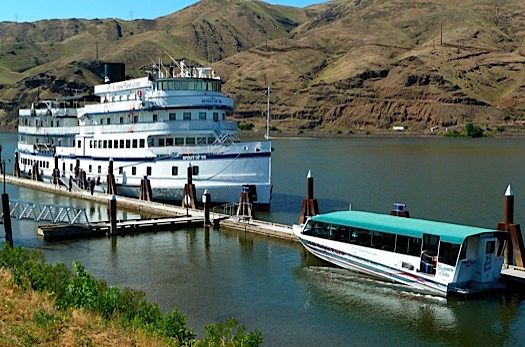
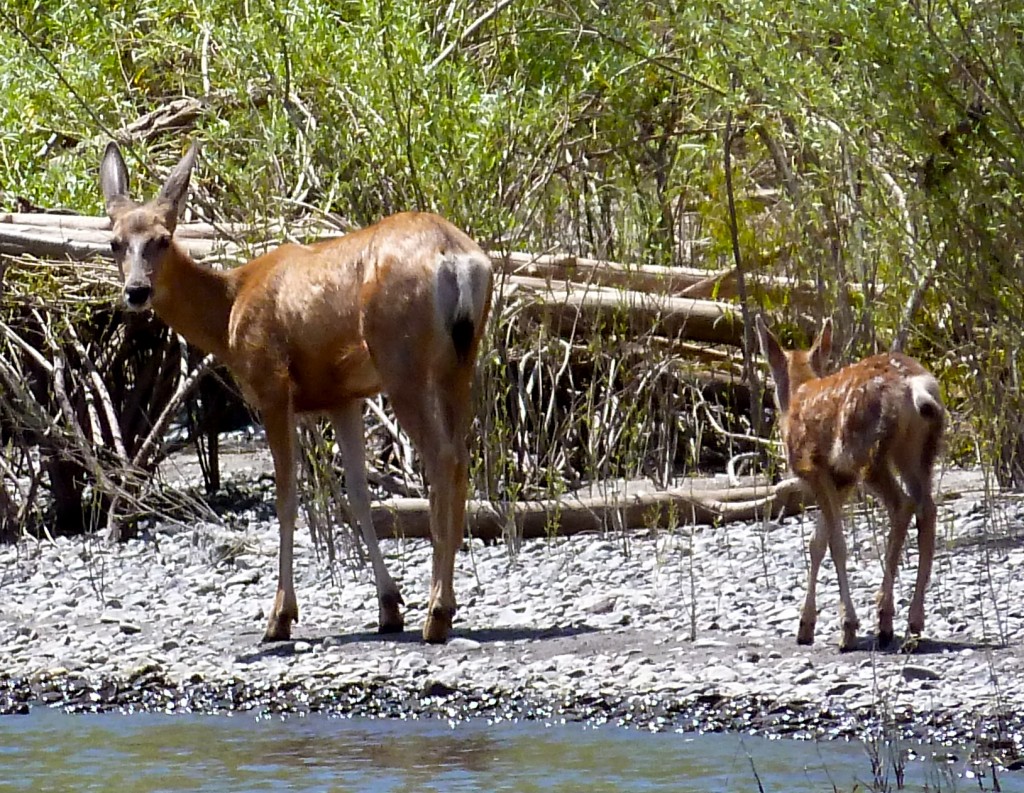
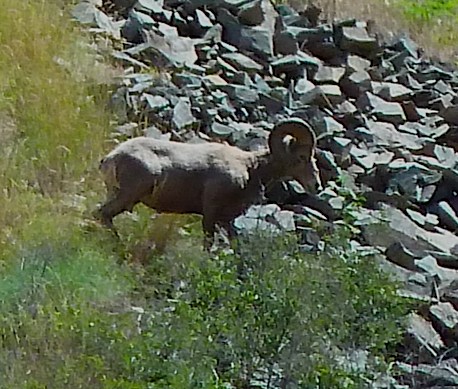
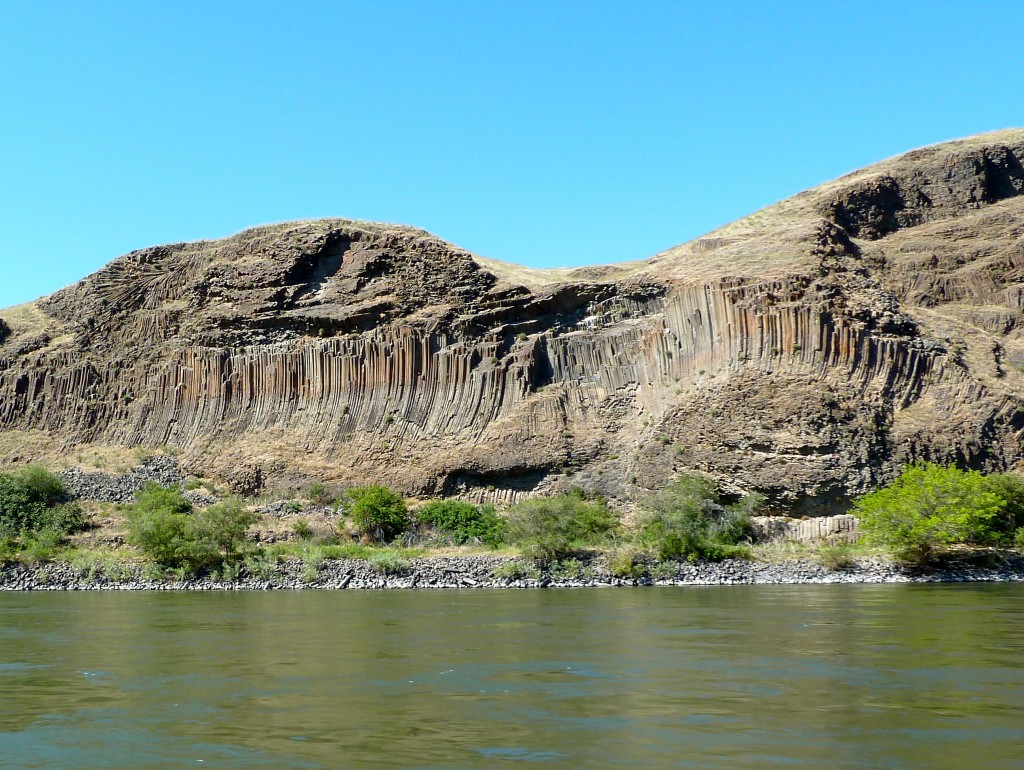
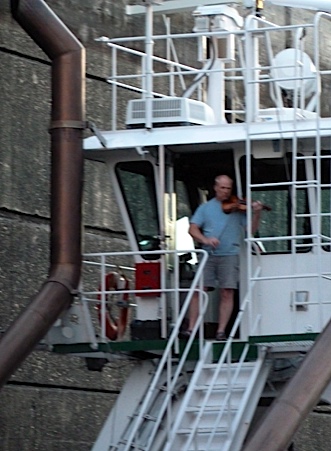
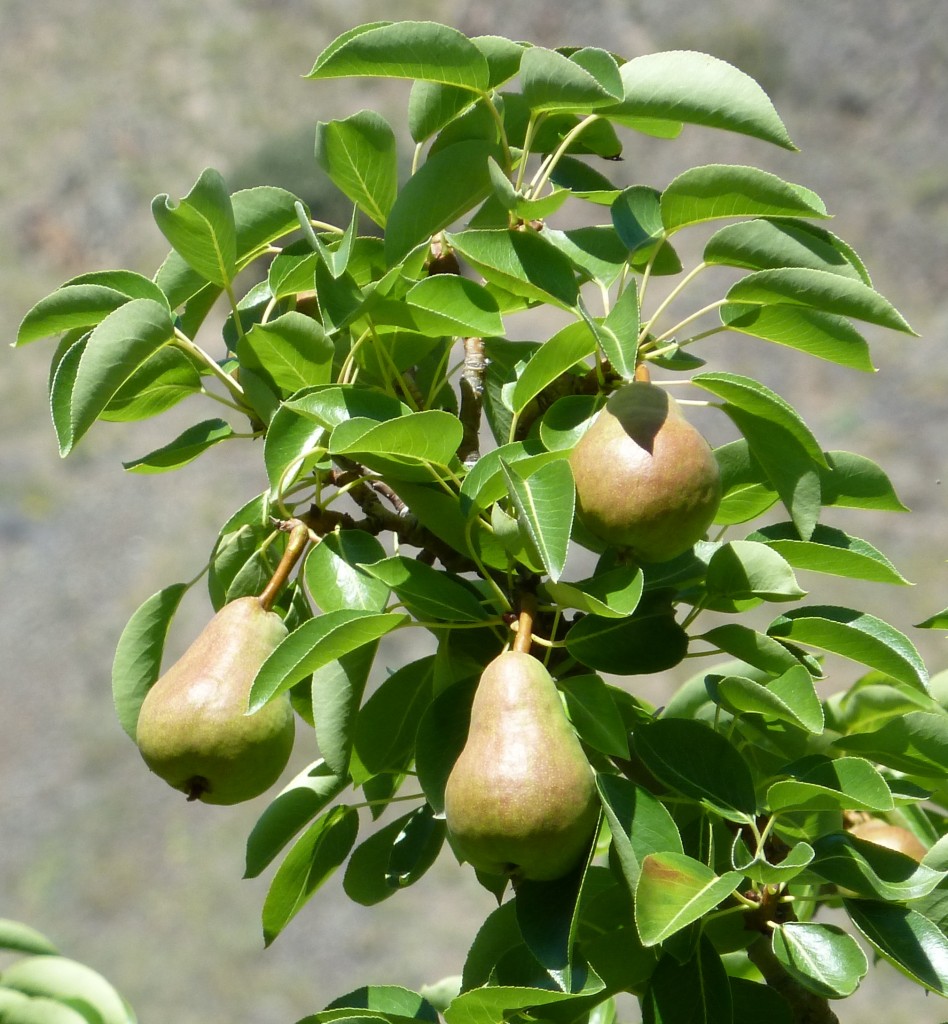
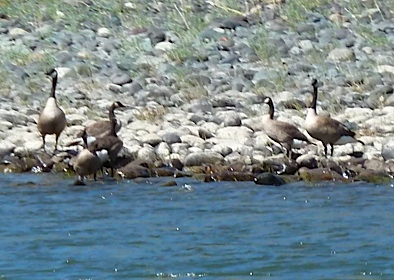
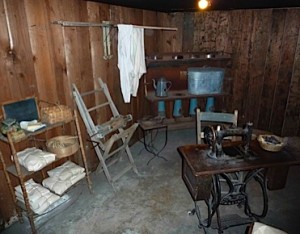
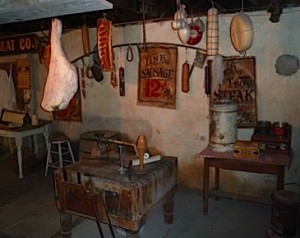
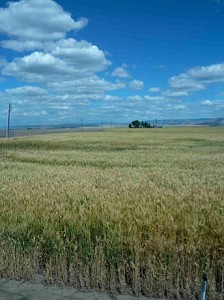
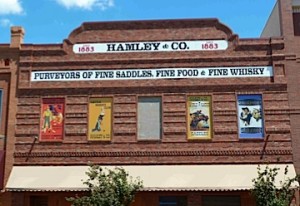
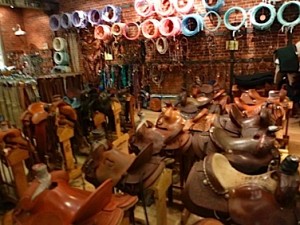
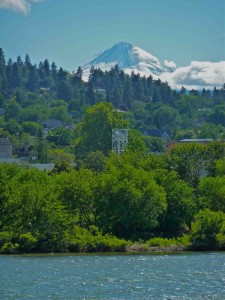
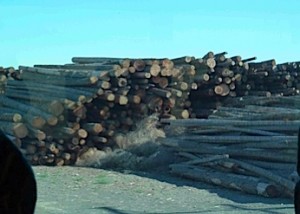
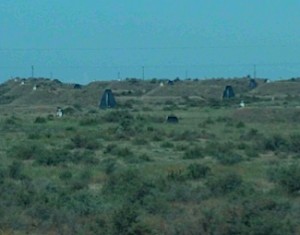
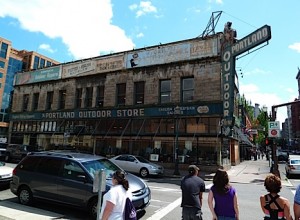


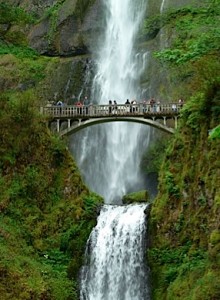

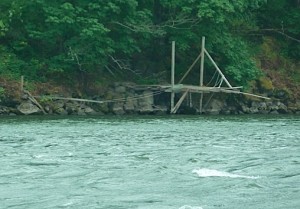
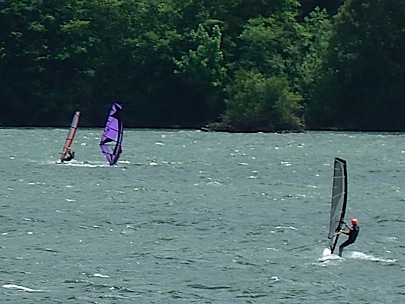
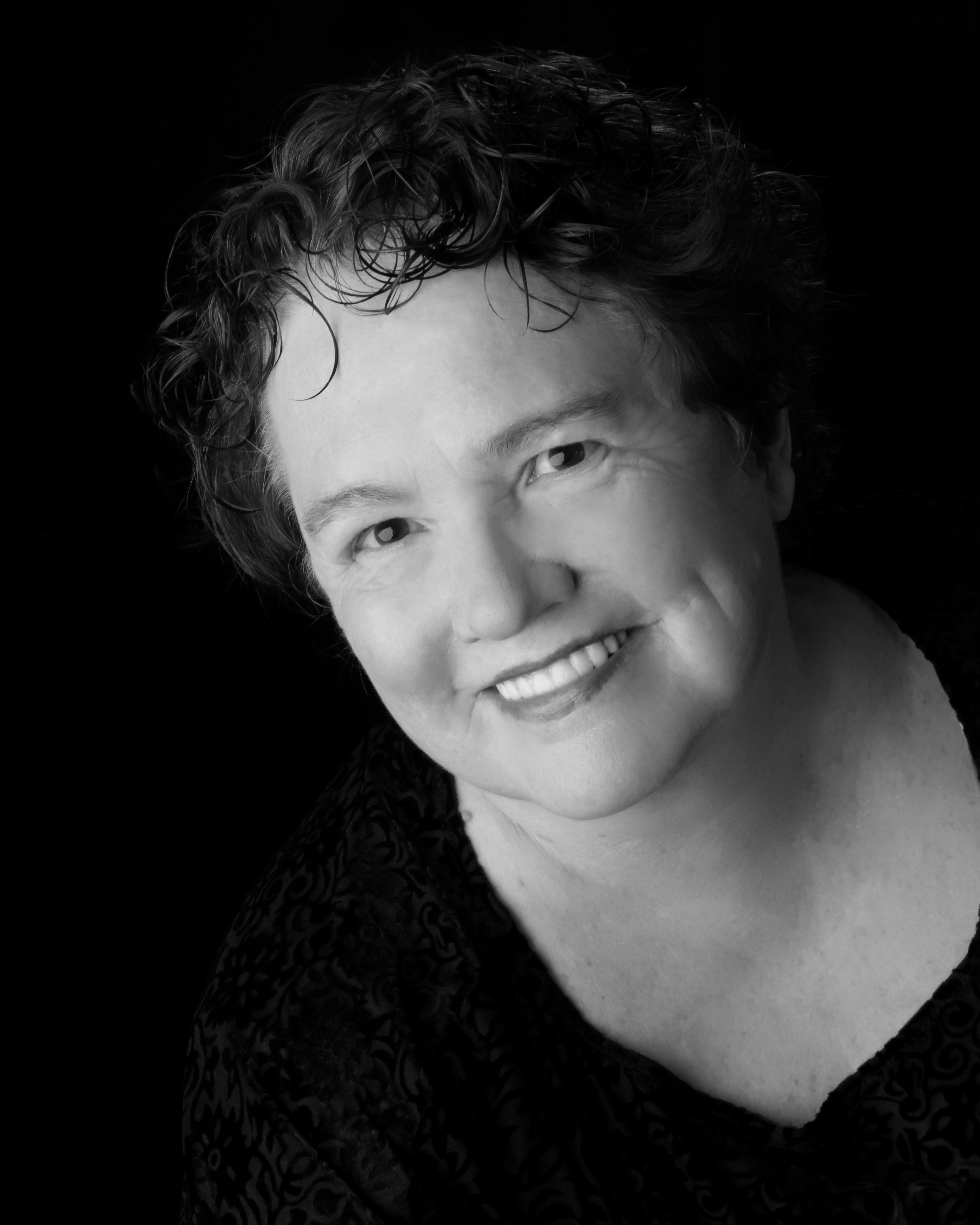
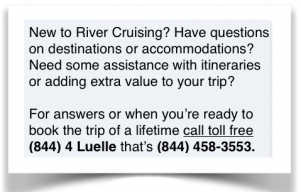
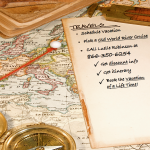
 We will never share your email and respect your privacy
We will never share your email and respect your privacy